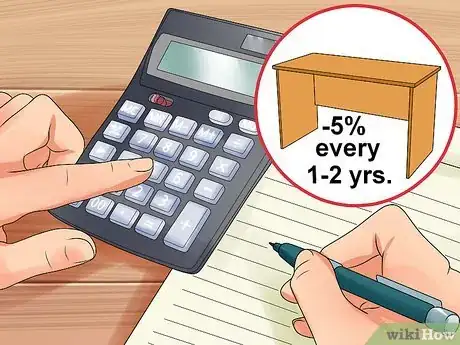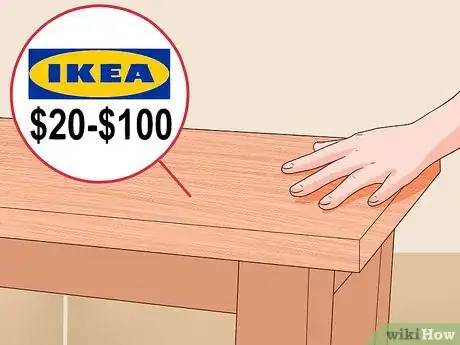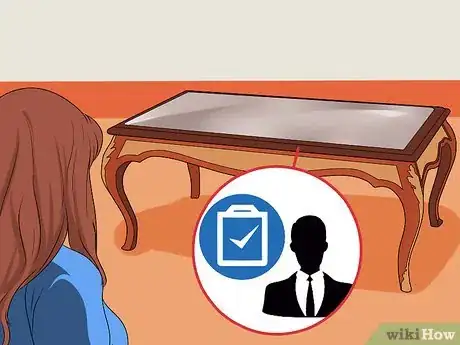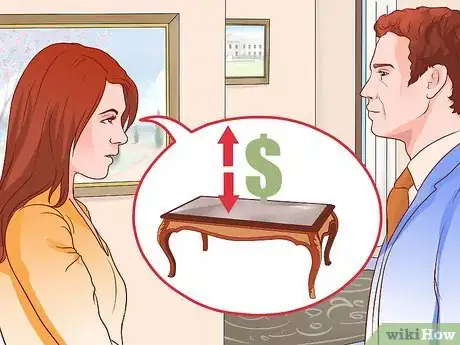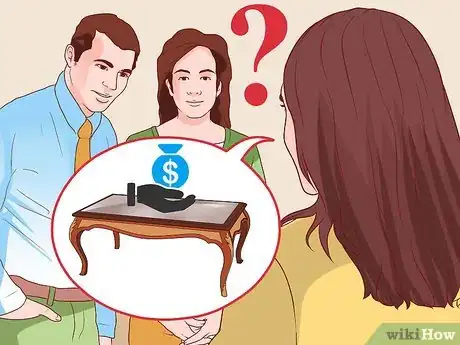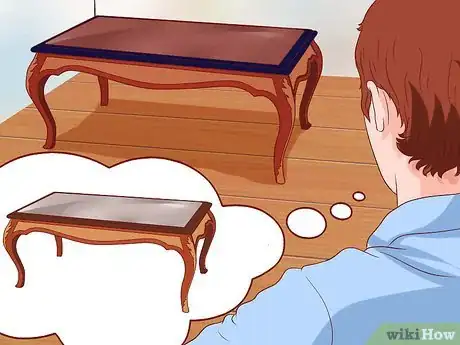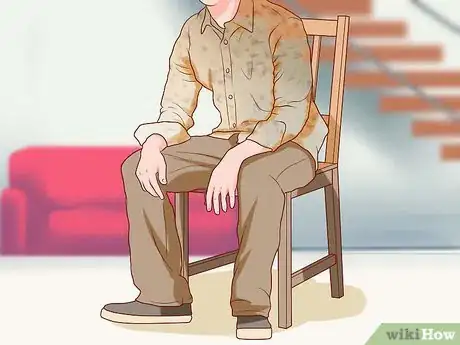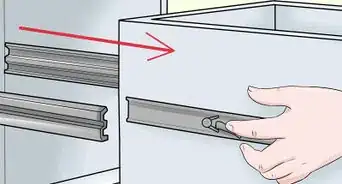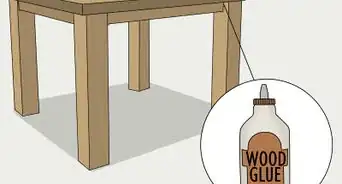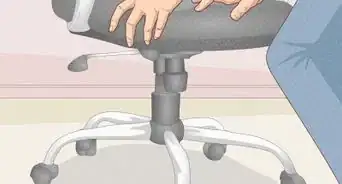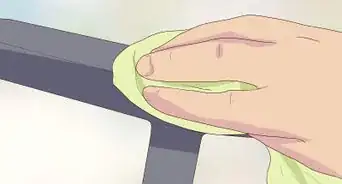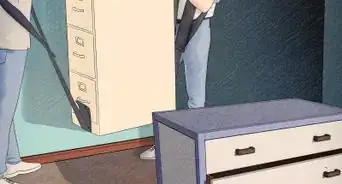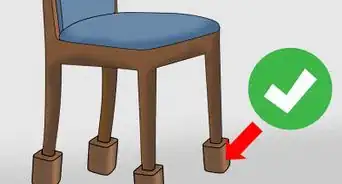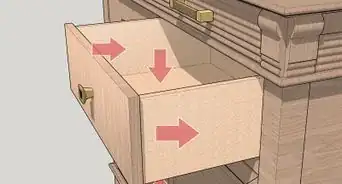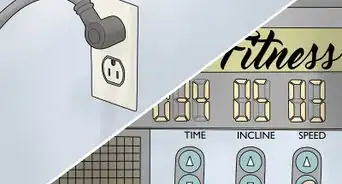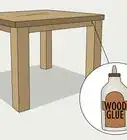wikiHow is a “wiki,” similar to Wikipedia, which means that many of our articles are co-written by multiple authors. To create this article, 15 people, some anonymous, worked to edit and improve it over time.
There are 8 references cited in this article, which can be found at the bottom of the page.
wikiHow marks an article as reader-approved once it receives enough positive feedback. This article has 15 testimonials from our readers, earning it our reader-approved status.
This article has been viewed 685,460 times.
Learn more...
Finding the perfect price for selling furniture can be difficult. You can't exactly sell at market value, and you don't want to walk away knowing that you could have made more money. Furthermore, finding the value of your used furniture can help you decide whether or not it's worth selling at all. While pricing furniture is notoriously difficult thanks to the sheer variety of pieces, there are some general rules of the trade.
Steps
Selling Your Old Furniture
-
1Wash, clean, and buff the furniture to make the most money. A clean piece of furniture is infinitely easier to sell, and to price competitively. Get out any stains, polish up the edges, and consider cheaply staining or painting faded furniture. A new coat of paint or stain only costs $20, but it can make a used desk look brand new if you apply it well.[1]
- If there are any small repairs you can make, put them in now. It will disproportionately lower the sale price if you expect the buyer to make fixes.
- Test any old electronics to ensure that they still work.
-
2Check prices of similar furniture online. Head online and see some of the current styles. Check out new pieces to see how yours fits. For example, a big, plaid couch will sell for significantly less than a plain-colored one, at least until plaid comes back in style. Go on Craigslist and Ebay and check what other people are selling similar items for.
- Furniture Valuation Guides, found easily online, will give you ranges of prices for most furniture.
- Look for items as similar as possible to yours. If you know the maker, model, or materials used, look up furniture with similar qualities.
- If you don't know how much the piece originally sold for, this is the best place to start.
Advertisement -
3Sell most furniture at 70-80% its original sale price. The easiest way to come up with a price is to slash 20% from the price you bought it for. This is considered industry standard, and is a reasonable guide for quality used furniture. Note, however, that this is just a baseline. You can tailor the price depending on a variety of other factors, as discussed below. Say, for example, you bought an dresser for $500 several years ago, and want to get rid of it:
- The dresser is in good condition, and not very old. You decide that 80% is fair.
- Multiply $500 by 80%, or .8. (500 x .8 = 400)
- $400 is your baseline asking price for the dresser.
-
4Compare the condition now to the condition when you bought it. When do you subtract 30%, and when do you only subtract 20%? The biggest factor is the condition. If it is in almost the exact condition as when you bought it, then you can sell it for only 20% less than when you bought the furniture. But if it's got some scuffs, dings, wobble, or other issues, you may want to lean towards 30% or more. In general, the longer you've owned it, the less you can sell it for.[2]
- If you bought a beautiful bookshelf for $1,000, and it is in prime condition, you can likely sell it for $800.
- If the bookshelf is faded, older, missing shelves, or has marks and chips, you may want to price it closer to $6-700.
-
5Subtract an additional 5% for every 1-2 years you've had the furniture. A ten-year old desk, for example, might sell at only 50% the price you bought it. Furniture, like cars and houses, lose value as they age. Unless the construction is incredible, or the furniture is an antique (older than 1970 and in good condition), you're going to take a hit for every year you've had it.[3]
-
6Pay attention to construction and materials. You don't have to be a woodworker to know good woodwork. Quality furniture feels sturdy -- it can handle weight, it doesn't wobble, and the joints are all sung. If they're not, prepare to sell your furniture for significantly less than when you bought it. But if the furniture feels solid and built to last, you may be able to sell it at close to the price you bought it.
- Cheap furniture, like IKEA-brand wares, will often sell far below it's buying price, often for no more than $20-100 bucks. This is because it is not made to be moved and resold, and is made of cheap materials.
- If you see particle board -- the layered, rough sheets of wood, chances are good you've got cheap furniture.[4]
-
7Get antique furniture appraised by a professional. Antiques are often worth much more than their original price. Unless you're an expert in antiques, or willing to do a lot of research into similar items, past selling prices, and restoration possibilities, you should contact an expert. Most antique stores have appraisers who will give you an honest opinion about your potential selling price.[5]
- If possible, bring the appraiser the year, make, and model of the furniture, or at least where it came from.
-
8Be willing to negotiate. It is very rare that you won't get the chance to discuss the price. If this happens, make sure you know several things before the negotiation begins. Having your strategy planned out before the bargaining begins is the best way to get a good price:
- Lowest possible price. Set this now, so that you don't have to think on the spot.
- Preferred price. What you want to sell it for, based on the value and your desire to get rid of it.
- Asking price. It may be identical to your preferred price. However, you can set the price a little higher than you need in the hopes that someone wants the furniture badly.
- Moving expenses. Who is going to pick up and move the furniture? Make sure this is dealt with in advance of sale.
-
9Ask friends and family if they would buy the furniture for the price offered. Poll a few people once you've settled on a price and see if it is reasonable. If a few people you know would pay for it at that price, then you'll likely be able to sell it at that price. If you're completely lost, this is a good way to set a fair price.[6]
- Remember, you don't want to get their opinion on whether or not the like the furniture, you just want to know if they think the price is reasonable.
- If you're still stuck, there are several websites, like Splitwise Furniture Calculator and Blue Book Furniture, that that will calculate potential prices for you. Note, however, that these are only estimates.[7]
Buying Used Furniture at the Right Price
-
1Shop around for similar furniture before making an offer. Unless you're already a pricing pro (in which case you likely don't need this article), you shouldn't make a purchase without comparing 4-5 similar pieces of furniture. Note the price differences, and ask the seller about any discrepancies. If you're buying a bedroom set, for example, educate yourself on the average costs for a bedroom set. Check out these average price ranges for common furniture to get started:
- Bed: $50-300
- Dresser: $20-100
- Desk: $25-200
- Dining Room Set: $150-1,000
- Table: $50-150
- Sofa: $35-200
- Arm Chair: $25-150.[8]
-
2Ask about the age and history of the furniture. Has it needed repairs? How old is it? Any issues to comment on? Most sellers won't tell you their furniture is terrible, but you can get a sense for their pricing with good questions.
- If someone tells you "it is expensive because it is antique," make sure you know when it was made. If they can't tell you, or if it was made after 1970, it is not an antique. Take any price with a grain of salt.
-
3Check for solid construction. You want snug, tight joints and no wiggle. The piece should feel solid under your weight, especially chairs, sofas, and tables. Trust your own instincts on this -- if it doesn't look solid and well built, then don't spend a ton of money on it. If it's got a few dings or scratches, you might want to ask for $25-30 less than the asking price.
- Don't buy the furniture if it is cheaply built-- chances are good you'll just need to buy another one in a few years.
-
4Find "fixer-uppers" for great deals. If you're looking for a great desk, you don't need to spend $500 on the perfect piece. If the construction is good and you like the shape, but the surface is scratched, faded, or ugly, you might be able to get a great price for a good desk. A can of paint, or wood stain, is cheap. If you're willing to spend an afternoon refinishing a piece of furniture you can often save several hundred dollars.[9]
-
5Set the price you are willing to pay before contacting the seller. Ultimately, a piece of furniture is worth the price it is sold for. So, if you really like a piece, and have shopped around to find a good potential price, make an offer. If you can back up your offer with evidence of similar furniture prices, even better. When making an offer, remember:
- Know how high you're willing to go. Set this now so that you can walk away if the price gets too high. You don't want to make this decision on the spot.
- Make your preferred price clear. This is not about tactics or strategy. Be honest and upfront when making your case to get the price you want -- "I'd be willing to pay $200 for this desk."
- Be flexible. If you're not going to budge on your price, don't bother negotiating. You should never pay more than you decided beforehand, but you should be able to work with the seller.
-
6Calculate the shipping and moving costs before purchasing. Make sure you know how you're going to get the furniture from the seller, and how this affects your price. Lock down who is responsible for moving the furniture before finalizing the sale.[10]
- Remember that you may have to reupholster or restain the piece if it is faded or in need of repair. Consider this part of the buying price, and let the seller know.
Community Q&A
-
QuestionI have a two piece maple hutch with a glass top. The base is in excellent condition with one long drawer and four smaller ones. How do I price it?
 Community AnswerCheck the cost of similar items on sites like craigslist or eBay. You can also check your local newspaper for similar furniture items and price it accordingly. Price it on the lower end if you need to sell it quickly, or higher if you have time to spare.
Community AnswerCheck the cost of similar items on sites like craigslist or eBay. You can also check your local newspaper for similar furniture items and price it accordingly. Price it on the lower end if you need to sell it quickly, or higher if you have time to spare. -
QuestionHow do I determine the value of a recliner?
 Community AnswerYou have to use your best judgment. Pricing depends on how old they are and the condition of the material. We sold our Lazy Boy recliners for $100 and $125. We paid $800 for each one. One was in good condition and one was a little bit worn. You can always stay open to negotiation if you think you may have priced too high.
Community AnswerYou have to use your best judgment. Pricing depends on how old they are and the condition of the material. We sold our Lazy Boy recliners for $100 and $125. We paid $800 for each one. One was in good condition and one was a little bit worn. You can always stay open to negotiation if you think you may have priced too high. -
QuestionWhat can I get for an 8-year-old cherry futon that originally was priced at $1,300?
 Community AnswerProbably $800, because you have used it for eight years. It also depends on how it looks; if it looks new, you might want to sell at a higher price.
Community AnswerProbably $800, because you have used it for eight years. It also depends on how it looks; if it looks new, you might want to sell at a higher price.
References
- ↑ http://budgeting.thenest.com/determine-fair-market-value-furniture-appliances-29074.html
- ↑ https://www.splitwise.com/calculators/furniture
- ↑ http://budgeting.thenest.com/determine-fair-market-value-furniture-appliances-29074.html
- ↑ http://www.ebay.com/gds/How-to-Price-Used-Furniture-/10000000177627477/g.html
- ↑ https://www.irs.gov/publications/p561/ar02.html#d0e483
- ↑ https://www.after50finances.com/home/strategies-for-pricing-and-selling-used-furniture/
- ↑ https://www.splitwise.com/calculators/furniture
- ↑ https://satruck.org/Home/DonationValueGuide
- ↑ http://www.apartmenttherapy.com/the-ten-commandments-of-buying-used-furniture-184689
About This Article
To price used furniture, multiply the original price by 0.7-0.8, which means you'd be selling it for 70-80 percent of the original price. If the furniture isn't in the best condition because it's worn, faded, or banged up, you'll probably need to sell it for less than that. You should also consider the age of the furniture when you're pricing it. Unless it's an antique, you'll want to subtract 5 percent from the price for every 2 years you've had the item. For tips on buying used furniture at a decent price, scroll down!




